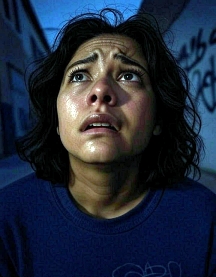In the wake of the COVID-19 pandemic, it’s hard not to view any new public health scare with a healthy dose of skepticism. The Eastern Equine Encephalitis (EEE) virus, a rare mosquito-borne illness, has recently captured headlines and, in some circles, sparked fears reminiscent of the early days of the pandemic. But for those of us who have witnessed how the COVID-19 narrative was manipulated—how it was used to exert control, crush small businesses, and inflate the power of big corporations—the sudden alarm over EEE raises some serious red flags.
What is EEE?
Eastern Equine Encephalitis virus is a rare, yet potentially severe, disease transmitted through mosquito bites. The virus is mostly found in swampy, wooded areas and is known to circulate among birds and mosquitoes. On occasion, humans and horses can become infected, leading to a range of symptoms from mild fever to severe neurological damage. EEE is extremely rare, with only a handful of cases reported annually in the United States, but its severity has led to a heightened level of concern.
On the surface, EEE might seem like a legitimate public health concern. After all, who wouldn’t be alarmed by a virus that causes encephalitis, or brain inflammation, and carries a high mortality rate in those who develop the most severe symptoms? However, when we peel back the layers of how this disease is being portrayed and the actions being proposed to “combat” it, a more troubling picture begins to emerge.
The COVID-19 Playbook: Is EEE the Next Chapter?
If there’s one thing the COVID-19 pandemic taught us, it’s that fear is a powerful tool. During the pandemic, we witnessed governments worldwide implement lockdowns, enforce social distancing, and promote a narrative that seemed more about control than actual public health. Small businesses were decimated, while big corporations like Amazon, Walmart, and pharmaceutical giants reaped the benefits. It’s no wonder that many people are now questioning whether the EEE scare is another chapter in the same playbook.
Consider the timing: Just as the world is emerging from the COVID-19 crisis, just as people are starting to question the lockdowns and the overreach of governmental powers, we’re suddenly being told to fear a new virus. But this time, it’s not a respiratory illness that’s spreading from person to person—it’s a virus that’s transmitted by mosquitoes in specific regions of the country. The chances of widespread human infection are slim to none, yet the media and certain government officials seem intent on stoking the flames of fear.
The Science of EEE: A Reasonable Threat or an Overblown Scare?
Let’s take a closer look at the science behind EEE. According to the Centers for Disease Control and Prevention (CDC), there are typically fewer than 20 cases of EEE reported in the United States each year. The virus is most commonly found in the Atlantic and Gulf Coast states, as well as in the Great Lakes region. The CDC also notes that not all people bitten by an infected mosquito will develop symptoms; in fact, most people infected with the virus will remain asymptomatic.
Of those who do develop symptoms, the majority will experience only mild, flu-like illness. It is true that a small percentage of those infected will develop severe neurological symptoms, and that the mortality rate among this group is high—about 30%. However, these severe cases are exceedingly rare. When compared to other health threats, such as the flu or even motor vehicle accidents, the risk posed by EEE is minuscule.
Yet, despite the rarity of the disease, there have been calls for increased mosquito control measures, public health advisories, and even the possibility of local lockdowns or restrictions in areas where EEE cases are reported. This raises the question: Is the response to EEE proportionate to the actual threat, or is it another example of government overreach?
Control Under the Guise of Protection
It’s hard to ignore the parallels between the response to EEE and the tactics used during the COVID-19 pandemic. During COVID, we were told that lockdowns, mask mandates, and social distancing were necessary to “flatten the curve” and protect public health. But as the pandemic dragged on, it became increasingly clear that these measures were doing more harm than good—especially to small businesses.
In the same way, the response to EEE seems to be less about protecting the public and more about exerting control. Consider the potential impact of widespread mosquito control measures: spraying pesticides, closing down outdoor events, and restricting movement in affected areas. Who benefits from these actions? Certainly not the small businesses that rely on outdoor events or the local communities that could be economically devastated by such measures.
Instead, the beneficiaries of this kind of response are the same big corporations that thrived during the COVID-19 lockdowns. The companies that provide mosquito control services, the pharmaceutical companies that might develop vaccines or treatments, and the big-box retailers that are unaffected by local lockdowns—all stand to gain, while regular citizens and small business owners bear the brunt of the impact.
Historical Parallels: The Great Depression Playbook
History has a way of repeating itself, and the response to EEE bears a striking resemblance to the tactics used during the Great Depression. During that time, small businesses were crushed under the weight of economic policies that favored big corporations and banks. The government’s response to the economic crisis was to centralize power, tighten control, and implement measures that ultimately benefited the wealthy elite while ordinary citizens suffered.
Today, we’re seeing a similar pattern. Just as during the Great Depression, the government is using fear—whether it’s the fear of a virus or the fear of economic collapse—to justify measures that increase its control over the population. And just as during the Great Depression, these measures seem to disproportionately affect small businesses and regular citizens, while big corporations continue to thrive.
The EEE Virus: Repeating the COVID-19 Tactics
Adding to the suspicion surrounding the EEE scare is the fact that several townships in Massachusetts have already begun implementing voluntary lock-ins with curfews, reminiscent of the COVID-19 lockdowns. Residents in these areas are being advised to stay indoors during peak mosquito activity times, and local governments are considering further restrictions. These measures are eerily similar to the COVID-19 lockdowns that crippled small businesses while allowing big corporations to flourish. The question is, why? Why are these extreme measures being pushed again, especially when the actual threat of EEE is so minimal?
This is not just a public health issue—it’s a repeat of the same tactics used during the COVID-19 pandemic. By encouraging or enforcing these voluntary lock-ins and curfews, the government is once again exerting control under the guise of protecting the public. And just like during the COVID-19 pandemic, these measures seem designed to benefit big corporations while squeezing out small businesses and restricting the freedoms of regular citizens.
Conclusion: Resist the Brainwashing and Refuse to Comply
It’s time to recognize these scare tactics for what they are: a continuation of the same playbook used during the COVID-19 pandemic, designed to control the population and consolidate power in the hands of the elite. The fear of EEE, like the fear of COVID-19, is being used to justify measures that have little to do with actual protection and everything to do with control.
We must resist the brainwashing. We must refuse to comply with unnecessary and overreaching government measures that do more harm than good. The EEE virus is just the latest example of how fear is being weaponized against us, and it’s up to us to stand up against these efforts. Protect your rights, support small businesses, and question the narrative. Don’t let history repeat itself—resist the control and stay vigilant in the face of these manufactured crises.



